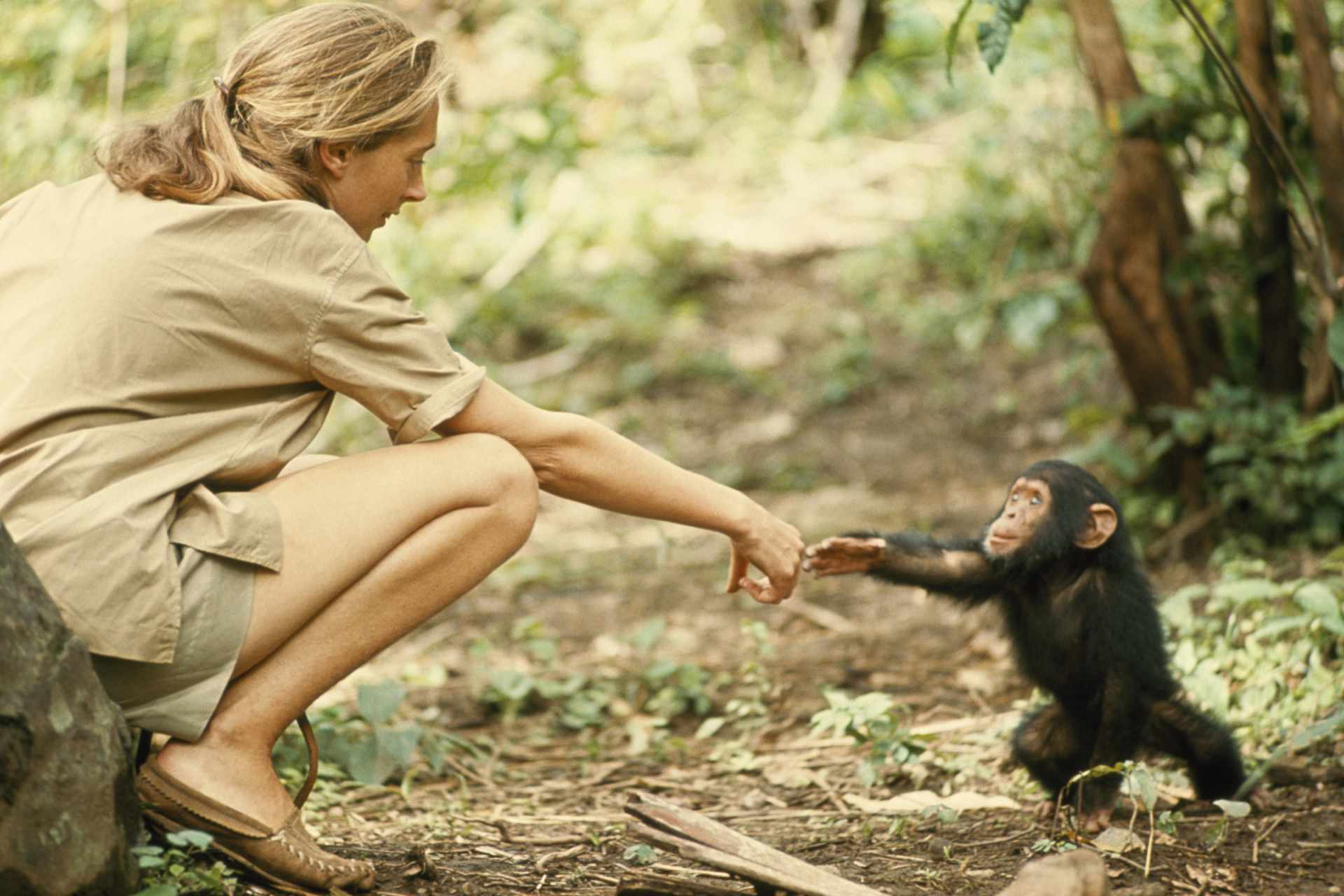
The king of the jungle, Tarzan, married the wrong Jane. If Tarzan weren’t a fictional hero but a real person, he would have followed Jane Goodall, the friend of both humans and nature – and of chimpanzees. Not just chimpanzees, though – Dr. Jane Goodall is a friend of the planet itself and all its inhabitants.
Dame Valerie Jane Morris Goodall was born on April 3, 1934, in London, England. She was the daughter of a businessman father and a mother who wrote novels under a pen name. Her father gifted her a stuffed chimpanzee named Jubilee instead of a teddy bear. Although her mother’s friends warned that the toy might scare her and give her nightmares, it had the opposite effect – it sparked her deep affection for chimpanzees. Childhood favorites like Tarzan and The Story of Doctor Dolittle also nurtured her fascination with animals and nature.
When her family moved to Bournemouth, she attended Uplands School, and after finishing high school, she did not pursue further formal education.
Her Life Changed Completely in Kenya
In her mid-twenties, Jane Goodall traveled to Kenya to visit a friend’s farm, where she met Louis Leakey, the Kenyan archaeologist and paleontologist. While Leakey was looking for a chimpanzee researcher, Goodall was simply interested in discussing animal welfare. Leakey offered her a position as his secretary and, after obtaining approval from both his wife and research partner Mary Leakey, sent Goodall to Olduvai Gorge, now within the borders of Tanzania, to outline his plans. Through Goodall lacked formal education, she had a natural talent and potential that Leakey immediately recognized.
In 1958, Leakey arranged for Goodall to study primate behavior with Osman Hill and Primate anatomy with John Napier in London.
In 1960, Jane Goodall became the first person to report an animal using a tool. A male chimpanzee she named David Greybeard was observed using a stick to extract termites from a mound. It was the first documented instance of a non-human creature demonstrating such intelligence by using a tool. Louis Leakey had been right about Goodall’s remarkable potential, despite her lack of formal education.
A Doctorate Without a Degree at Cambridge
Jane Goodall’s research was providing groundbreaking insights into the animal kingdom and attracting widespread attention. With financial support from Louis Leakey, she was admitted to Cambridge University in 1962, despite not having an undergraduate degree. She became only the eight person ever allowed to pursue a PhD at Cambridge without a university diploma. She joined Newnham College to earn her doctorate in ethology, completing her dissertation, The Behavior of Free-Living Chimpanzees, in 1966, detailing her five years of fieldwork at the Gobe Reserve.
Dr. Goodall’s observations were instrumental in shaping the future of evolutionary science. She revealed that animals could form strong family bonds and even fight to protect their territories – challenging humanity’s egocentric view of nature. Her work was featured both in scientific and popular magazines, and in 1965, she appeared on the cover of National Geographic, drawing global attention to the emotional and social lives of primates.
The Sarcastic Male-Dominated World of Science
Dr. Jane Goodall, while studying the animal kingdom, gave animals names, called them her “friends,” built close relationships, and even played and wrestled with their offspring. Many documentaries feature the warmth and closeness she developed with animals and watching this connection turned her into a hero in the eyes of both children and adults. The male scientists of her time, however, mocked this closeness in an attempt to discredit her. Just as she transformed humanity’s approach to animals and nature, Goodall also changed the way men in her field viewed female scientists. In a sense, she overthrew them all – not by arguing back, but simply by doing her work with love and passion, by playing with the chimpanzees she so dearly loved.
Entering the forest as a young, curious woman, she emerged as an activist who dedicated her entire life to protecting nature and animals. She fought for the release of chimpanzees kept in zoos and used in research, raised awareness about climate change, and spoke out against the destruction of natural habitats. Founded in 1977, the Jane Goodall Institute continues to work to protect chimpanzees and supports ongoing projects that benefit animals and the environment.
Hope Always Exists and Should Remain
Drawing attention to the fact that we are in the midst of a new extinction, Goodall once said, “There is, and there must always be, hope. Hope lies within humankind.” Surely, if she had not believed in hope, she would not have continued striving until her final breath. On October 1, 2025, she passed away at the age of 91 in California due to natural causes. Just a week before her death, she appeared on stage in New York for an interview. Until the very end, she kept working and traveling. She was in California to give a speech at an event scheduled for October 3. In one of her interviews, she mentioned that since 1986, she had not slept in the same bed for more than three consecutive weeks.
Through her observations, she revealed humanity’s close kinship with chimpanzees and revolutionized science. She became a tireless defender of nature and animals. After her passing, the United Nations released a statement saying that she had worked relentlessly for the planet and all its inhabitants, leaving behind an extraordinary legacy for humanity and nature alike. A Jane Goodall once walked this Earth – not only a friend of the chimpanzees, but of the planet and those who dwell on it.





